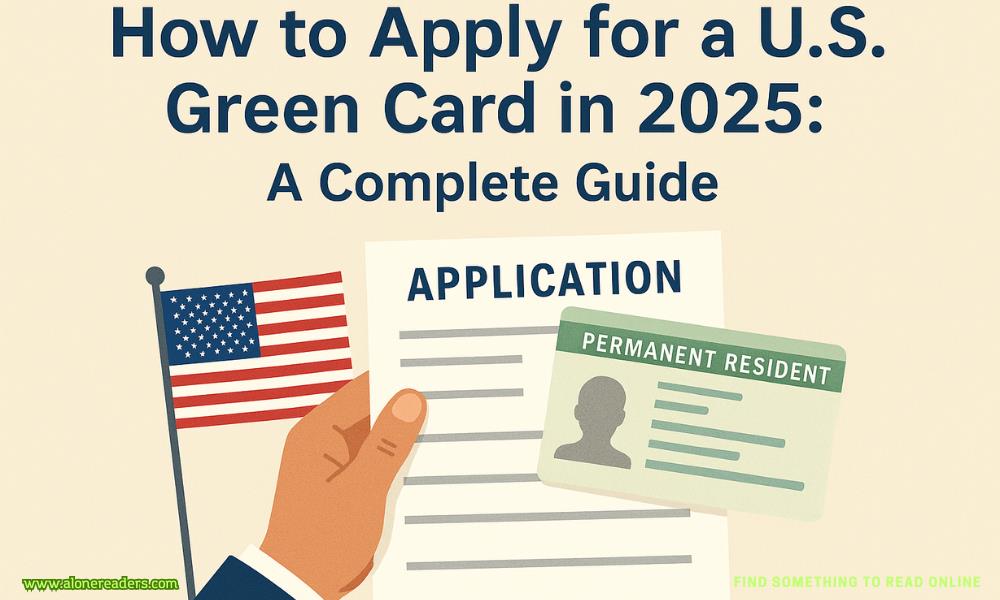
The United States Green Card, officially known as the Permanent Resident Card, allows foreign nationals to live and work permanently in the U.S. As of 2025, the U.S. Citizenship and Immigration Services (USCIS) offers several pathways to obtain a Green Card, including family sponsorship, employment-based categories, the Diversity Visa Lottery, and humanitarian programs. However, the process varies greatly depending on the category, and making a mistake can lead to costly delays or even denial. This in-depth guide covers everything you need to know to apply for a U.S. Green Card in 2025, broken down by eligibility category, required documentation, filing procedures, processing times, and fees.
1. Family-Based Green Cards
This is the most common route for immigrants and is divided into two major groups:
2. Employment-Based Green Cards
Divided into five preference categories:
3. Diversity Visa (DV) Lottery Program
Each year, 55,000 Green Cards are available through the DV lottery to individuals from countries with low rates of immigration to the U.S. Applications for DV-2027 will open in late 2025.
4. Humanitarian Programs
Includes refugees, asylum seekers, and individuals under the Violence Against Women Act (VAWA), Special Immigrant Juveniles, and victims of trafficking (T visas) or crime (U visas).
Family-Based Green Card Application Process
Step 1: Petition Filing (Form I-130)
The U.S. citizen or permanent resident sponsor must file Form I-130 with USCIS. This establishes the qualifying relationship.
Step 2: Wait for Priority Date to Become Current
For preference categories, you must wait until your visa number becomes available. Immediate relatives skip this wait.
Step 3: Adjustment of Status or Consular Processing
Supporting Documents Include:
Fees (as of 2025):
Step 1: Labor Certification (PERM)
Your employer must file a labor certification with the Department of Labor (unless exempt), proving no qualified U.S. workers are available.
Step 2: Immigrant Petition (Form I-140)
Once the PERM is approved, the employer files Form I-140 with USCIS.
Step 3: Adjustment of Status (I-485) or Consular Processing
Same as in the family-based category. Wait for the visa bulletin to confirm your priority date is current.
Supporting Documents Include:
Fees:
Premium Processing:
Available for I-140 at an additional $2,805 to get a decision in 15 days.
Step 1: Online Application
Apply during the open window (usually October–November). No fee to enter.
Step 2: Selection and Notification
Winners are notified via the Entrant Status Check on the DV website. There are no official emails or phone calls.
Step 3: File Form DS-260
Selected applicants must complete this immigrant visa form and prepare for an interview.
Step 4: Interview at U.S. Embassy
Bring your documents: birth certificate, police certificates, proof of education or work experience, and financial support evidence.
Step 5: Receive Immigrant Visa
You’ll receive your visa and a sealed packet to present upon U.S. entry. Your physical Green Card arrives by mail.
Estimated Cost:
Adjustment of Status (AOS):
Consular Processing:
Processing times vary greatly:
Visa Bulletin updates monthly from the Department of State help track priority dates.
Conclusion
Applying for a U.S. Green Card in 2025 involves navigating a highly structured system with specific rules based on your eligibility category. Whether through family, employment, diversity visa, or humanitarian grounds, careful planning, complete documentation, and awareness of timelines are crucial to success. Each path has its own set of forms, fees, and requirements, but a clear understanding of your category will help you avoid delays or denials. With diligence and accuracy, your path to U.S. permanent residency can be well within reach.